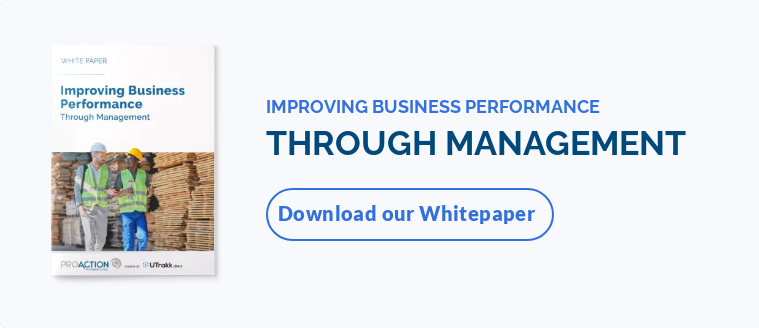Autocratic management style
Characterized by strict expectations, a strong sense of authority, and a high level of demand, autocratic leadership (or authoritative management) values performance at all cost. Although useful in times of crisis, when there is a need to act fast and get quick results, this leadership style shouldn't prevail; the leader with an autocratic style doesn't promote professional growth and employee well-being.
Focused on operational objectives and results, the autocratic management style tends to forget human relationships and the organization's long-term vision. Their decision-making is based on the short term, which can be challenging for future growth.
The lack of recognition and the frequent use of disciplinary measures can lead to employee dissatisfaction, resulting in disengagement and high turnover. The autocratic management style is not suitable for organizations that want to build a positive, constructive, and serene workplace.
Employees under an autocratic leadership often keep their improvement suggestions to themselves for fear of being ignored, or even dismissed. Through this top-down approach, the team's collective intelligence is left untapped and decision-making is solely based on the opinions and ideas of the autocratic style leader, hindering creativity and innovation.
Benefits:
-
High short-term productivity: The focus on results means that business objectives can be achieved quickly.
-
Effectiveness in situations of crisis: Autocratic management is suitable for times when it is necessary to act quickly, with discipline.
-
Rapid decision-making: Autocratic managers impose their decisions, avoiding lengthy discussions and speeding up execution.
-
Clear direction and expectations: Employees know exactly what they have to do, which reduces confusion and errors.
Disadvantages:
-
Employee demotivation: A lack of autonomy and recognition can reduce team members' engagement.
-
Lack of innovation: As employees are not involved in decisions, creativity and initiative are limited.
-
High turnover rate: A autocratic management style can cause stress and tensions, increasing the risk of employee resignations.
-
Top-down communication: Failure to listen to employees can lead to frustration.
Technical management style
This leadership style is mainly applied by managers who once were operations employees. Technical leaders have an excellent knowledge of the shop floor – challenges, equipment, products, and processes.
Ideal for an inexperienced team, this type of manager is like an encyclopedia for their employees, the ultimate reference when it comes to the technical execution of a task. Their know-how, gained from many years of experience, give the manager a good overview of priorities and projects.
In the short term, technical management is very useful for anything related to the production site and its processes, employees' specific roles, and the tasks to prioritize. However, this deep understanding of how operations work is not enough to elevate employee engagement and performance.
Instead of overseeing tasks, a leader with a technical management style tends to get too involved in their employees' day to day tasks. They feel like they have to do it all to continue creating value, rather than helping their employees learn the ropes and be accountable for their work. This behavior is usually due to insufficient support at the time of promotion and a lack of clarity on what the new role entails. Although technical managers have good management qualities, they must adopt a laissez-faire management style to encourage team members' autonomy.
Benefits:
-
In-depth expertise: The leader has perfect command of the processes, tools, and challenges of the shop floor, enabling them to make the best decisions based on operational realities.
-
Operational efficiency: They can quickly identify errors or opportunities for improvement, which accelerates innovation and manufacturing process optimization.
-
Credibility and legitimacy: Having already held a technical position, they naturally inspire the respect of their team, which recognizes their skills and experience.
-
Reduction of the gap between upper management and the floor: Through their experience, the technical manager can influence the company's strategies to reflect the reality of operations.
Disadvantages:
-
Difficulty delegating: Accustomed to solving problems themselves, they find it difficult to trust their team and delegate, hindering the autonomy of employees.
-
Risk of micromanagement: The technical leader is tempted to intervene in their employees' tasks, slowing down work, demotivating employees, and hindering team's morale.
-
Limited strategic vision: Their technical expertise can lead them to focus on operational aspects only, instead of also considering longer-term strategic planning and goals.
-
Lack of people management skills: This leadership style is characterized by challenges in managing conflicts, motivating team members, and fostering a positive workplace.
Democratic management style
A good listener and quick to show appreciation to their employees, the leader with a democratic management style (or collaborative leadership style) creates a positive work environment where everyone is encouraged to express their ideas. This leadership style works well with creative teams.
However, democratic managers may overlook key performance indicators in the decision-making process, which can lead to poor results. Under this leadership style, delivered tasks and projects are often incorrectly assessed and measured.
In contrast to autocratic or authoritative management, the democratic management style struggles with showing authority, setting clear objectives, and ensuring that employees understand their role in the company's performance. The democratic leader's team members find it difficult to prioritize tasks and fulfill their responsibilities due to a disalignment with organizational objectives.
Benefits:
-
Increased employee engagement: By involving employees in decisions, employees feel valued and motivated.
-
Improved creativity: Ideas emerge from different perspectives, fostering creativity and innovation.
-
Better team cohesion: Collaboration and communication strengthen team dynamics and mutual trust.
-
Reduction in staff turnover: A more open and engaging workplace encourages employee loyalty.
Disadvantages:
-
Risk of dilution of responsibilities: When everyone participates, it can be difficult to designate a clear leader.
-
Slower decision-making process: Consultation and the exchange of ideas can take time before a decision is reached.
-
Potential for conflict: Differences of opinion can generate tension.
-
Not suitable for all employees: Some employees prefer a more autocratic environment and may feel lost in a collaborative setting.
Coaching management style
The coaching leadership style employs effective, more human management methods, focusing on employee development and collective success.
The role of the manager coach is to support employees in their career development by strengthening their skills and promoting strong engagement. Rather than solely prioritizing performance, they create a motivating environment that encourages continuous learning and growth.
This management style is also founded on support, open communication, and empowerment. The manager coach encourages autonomy and initiative, contributing to employee satisfaction and retention. Well-supported teams are more efficient and engaged, positively influencing the corporate culture and overall performance.
Becoming a manager coach requires personal investment and coaching. By developing their own leadership skills, these managers strengthen their credibility and become a role model for their team members.
Benefits:
-
Increased engagement: Managers encourage employee motivation and engagement by providing clear goals and support.
-
Improved performance: By helping employees identify their strengths and areas for improvement, this leadership style enables team members to reach their full potential.
-
Better communication: An open and positive work environment facilitates regular, constructive feedback, improving the quality of communications.
-
Skills development: The manager coach promotes continuous improvement, active learning, and employee autonomy.
Disadvantages:
-
Time-consuming: This type of management requires a significant investment of time to help employees thrive.
-
Difficulty managing emergencies: A coaching management style may be less effective in environments where quick decisions must be made.
-
Dependence on the leader's skills: A bad coach can have the opposite effect, leading to poor performance and low motivation.
-
Not suitable for all employees: Some employees prefer clear guidelines rather than exchanges focused on personal development.
Other top types of management styles
Effective leadership comes in many other forms, with different management styles suited to various teams, industries, and situations. Understanding these leadership trends can help managers adapt their approach to maximize team performance and engagement. Below is an overview of key management styles leaders can practice to create a positive impact in their workplace:
-
Laissez-faire management style: Leaders with a laissez-faire management style take a hands-off approach, allowing employees significant autonomy in decision-making and problem-solving. This style works well for experienced, self-motivated employees but can lead to a lack of direction and accountability if employees need more guidance.
-
Transactional management style: Transactional management focuses on structure, setting clear expectations, and using rewards and punishments to drive performance. While effective for routine tasks and short-term objectives, this style may discourage creativity and long-term development.
-
Transformational management style: Transformational managers inspire employees with a compelling vision and encourage innovation, personal growth, and adaptability. While highly motivating, this approach requires constant communication and can lead to dependency on the leader.
-
Servant management style: A servant leadership style prioritizes their team members’ needs, fostering trust, loyalty, and professional development. This style creates a positive work culture but may require time to address individual needs and risks manager burnout.
-
Bureaucratic management style: Bureaucratic leaders strictly adhere to rules and procedures to maintain stability and consistency. While effective in highly regulated environments, this approach can hinder creativity and flexibility.
Optimize engagement and performance with the right management style
Choosing the right management style is essential to engage your employees and ensure high performance of your organization. Each style – autocratic, technical, democratic, coaching, laissez-faire, transactional, transformational, servant, and bureaucratic – has its strengths and challenges. There is no single ideal model; an effective leadership knows how to adapt their approach based on their team's needs and their company's unique context and goals.
The first thing to do is to set clear objectives for your employees to take advantage of their knowledge and achieve the desired results. Then, it is imperative to recognize contributions on a regular and timely basis. This simple gesture has a great impact on both the work environment and the performance of employees (and ultimately, the company). Finally, being rigorous is the way to go.
By combining these different management styles with flexibility and discernment, while emphasizing a coaching relationship with your team, you can foster an engaging workplace, stimulate innovation and propel your organization to new heights.









